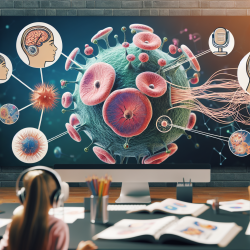As professionals dedicated to supporting diverse learners, especially those with significant communication challenges, it is imperative to continually refine our skills and strategies. The field of special education is vast, encompassing a range of needs from developmental delays to physical handicaps. Among the resources that can aid in our professional development is "A Handbook for the Laryngectomee," a comprehensive guide that provides valuable insights into the rehabilitation of patients post-laryngectomy. While the handbook specifically addresses the needs of laryngectomee patients, its principles and strategies can be broadly applied to augmentative and alternative communication (AAC) practices within special education settings.
The significance of this handbook extends beyond its immediate audience. It offers a treasure trove of knowledge that can enhance our approach to teaching communication skills to students with various disabilities. This blog post explores how practitioners can apply the outcomes of the research presented in the handbook and encourages further exploration into augmentative communication strategies.
Understanding the Basics
The handbook begins with a clear explanation of the anatomical changes following a laryngectomy and introduces terminology crucial for understanding communication post-surgery. For educators and therapists, grasping these basics is the first step toward empathy and effectiveness in teaching alternative communication methods. Although the language can be complex, the handbook's approach to introducing new terms sets a precedent for how we might structure our own educational materials for both colleagues and the families of students with communication challenges.
Strategies for Communication Rehabilitation
One of the core sections of the handbook deals with methods for learning esophageal voice, offering practical suggestions such as the importance of frequent practice, overarticulation, and relaxation. These principles are not unique to laryngectomee patients; they are applicable to teaching students with a variety of speech and language impairments. For instance, the emphasis on practice and relaxation can be integrated into speech therapy sessions for students with dysarthria or apraxia.
Augmentative and Alternative Communication (AAC)
The handbook also touches upon the use of voice prostheses and mechanical or electrical artificial larynges, which parallels the use of AAC devices in special education. Educators can glean insights into the selection process for these devices, understanding the patient's needs and abilities, and matching them with the appropriate technology. This process mirrors the assessment and implementation of AAC devices for students, emphasizing the need for customization and individualized approaches.
Practical Applications and Resources
Perhaps most valuable is the handbook's wealth of practical applications and resources, including charts for rating communication proficiency and comprehensive reviews of available devices. Special educators can adapt these tools for use in their own settings, creating similar charts to track students' progress with AAC devices or compiling resource lists for families. Additionally, the handbook's focus on personal care and the psychological aspects of communication rehabilitation offers a holistic view that is often necessary in special education.
Facilitating Pragmatic Communication Skills
The handbook's positive focus on facilitating pragmatic communication skills is of particular benefit. The strategies and handouts provided, although specific to laryngectomee patients, can inspire similar materials for teaching social communication skills to students with disabilities. For example, educators can develop handouts on using AAC devices in social settings or guidelines for integrating non-verbal cues with device use.
Encouraging Further Research and Professional Development
"A Handbook for the Laryngectomee" serves as a starting point for practitioners looking to enhance their skills in teaching communication. However, the field of AAC and special education is ever-evolving, with new technologies and methodologies emerging regularly. Practitioners are encouraged to delve deeper into the topics presented in the handbook, seeking out additional research, attending conferences, and participating in webinars focused on AAC and special education.
Networking with colleagues and sharing experiences can also provide valuable insights and strategies that can be applied in the classroom or therapy setting. Engaging in continuous professional development ensures that we, as educators and therapists, are providing the best possible support to our students, enabling them to communicate effectively and confidently.
In conclusion, while "A Handbook for the Laryngectomee" is tailored to a specific audience, its principles and strategies offer broad applicability in the field of special education. By implementing its outcomes and encouraging further research into augmentative communication, practitioners can significantly improve their skills and better support their students. To explore these insights in detail and apply them to your practice, A Handbook for the Laryngectomee is an invaluable resource.










